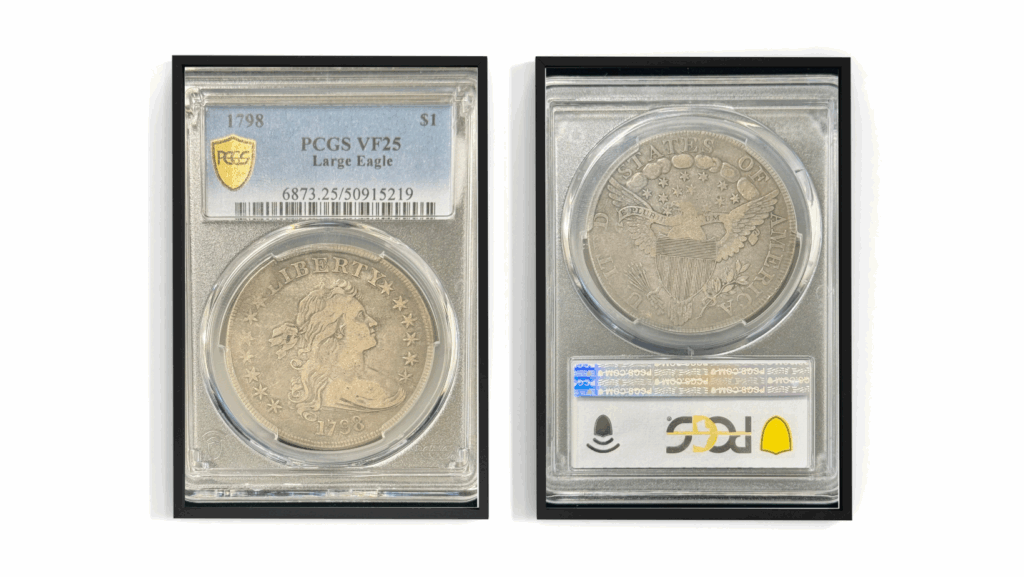Struck at the first United States Mint in Philadelphia, this coin reflects the evolution of the young nation’s coinage as it transitioned from symbolic designs to a more majestic and lasting national image.
Historic Philadelphia Mint Origins
The original Philadelphia Mint, established in 1792, was the first official building authorized by the U.S. government under the Coinage Act. By 1798, the Mint was producing coinage that combined both artistry and patriotism. The 1798 silver dollar was one of the first to feature the “Heraldic Eagle” reverse design—commonly referred to as the Large Eagle—which replaced the earlier Small Eagle style used from 1795 to 1797.
This new reverse was inspired by the Great Seal of the United States, featuring a boldly spread eagle with a shield on its chest, holding arrows and an olive branch, with stars above. It was designed to convey the strength and unity of the new republic.
The Coin Itself – Graded PCGS VF25
The 1798 Large Eagle silver dollar offered here is certified by PCGS as VF25 (Very Fine), indicating moderate wear with most major details visible and clear. This grade is a highly collectible sweet spot—offering strong historical appeal, visible devices, and an accessible price point compared to higher-grade examples.
A Collector’s Cornerstone
With only a limited number of survivors from the original mintage, and given the rigors of early commerce and melting, every 1798 dollar is a tangible link to America’s earliest monetary system. It remains one of the most sought-after types among early silver dollar collectors, especially those seeking an example with both history and eye appeal.
Whether you’re building a type set or investing in early American silver, the 1798 Draped Bust Large Eagle Dollar in PCGS VF25 represents a foundational piece of numismatic history from the original U.S. Mint in Philadelphia.



 Hottest coin out there today
Hottest coin out there today







